Quartz
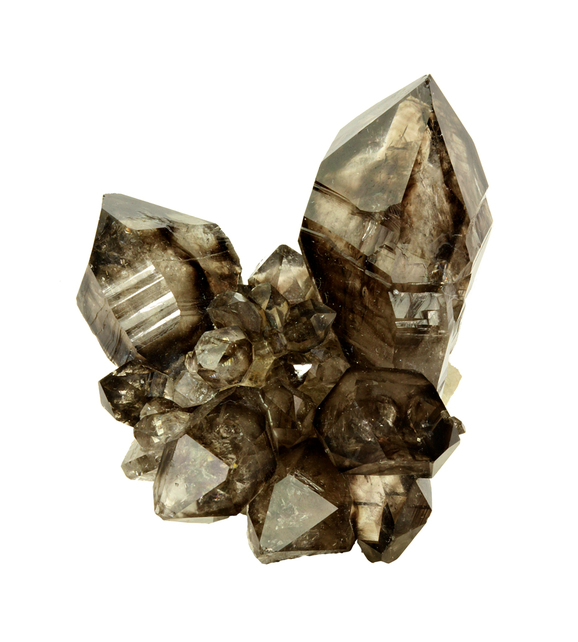
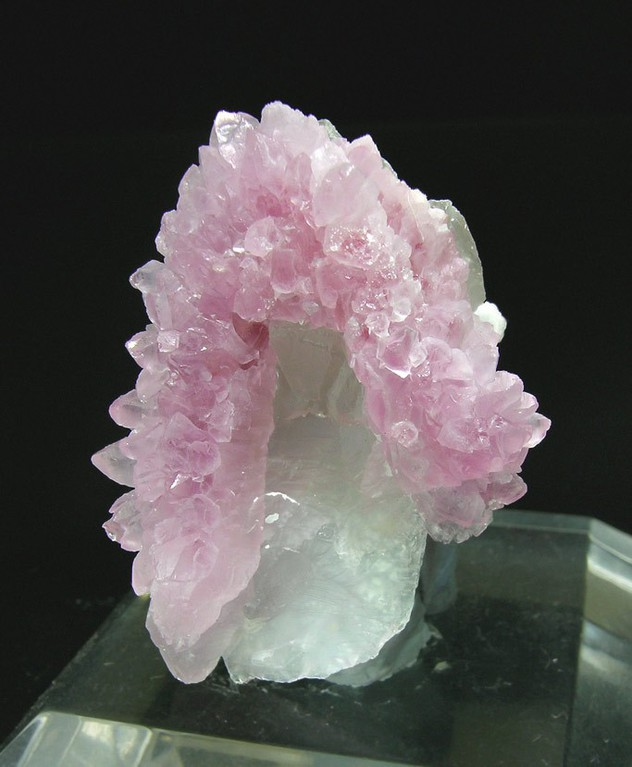
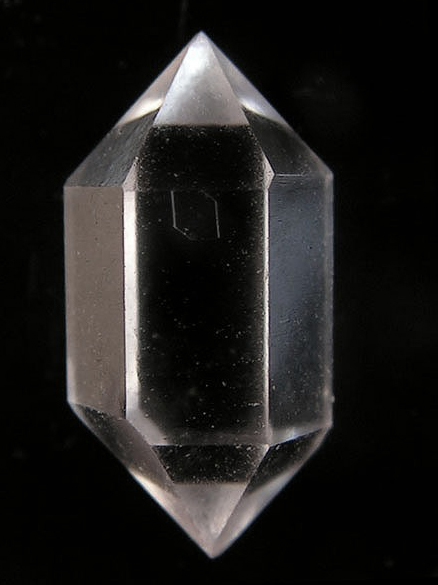
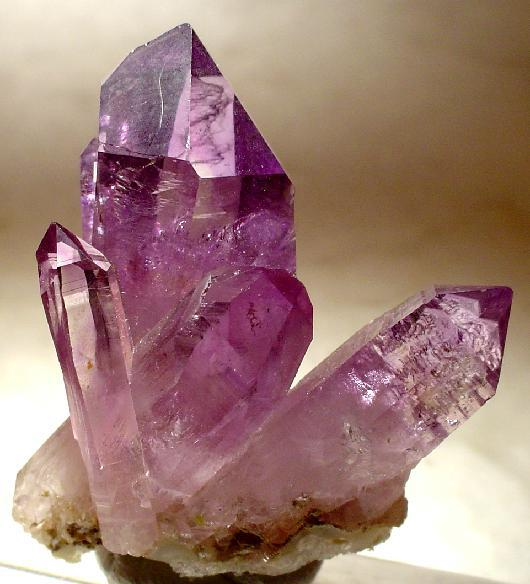
Quartz is one of the most famous minerals on the earth. It occurs in essentially all mineral environments, and is the crucial constituent of many rocks. It is likewise the maximum varied of all minerals, taking place in all distinct habits, and colorings. There are more range names given to Quartz than any other mineral.
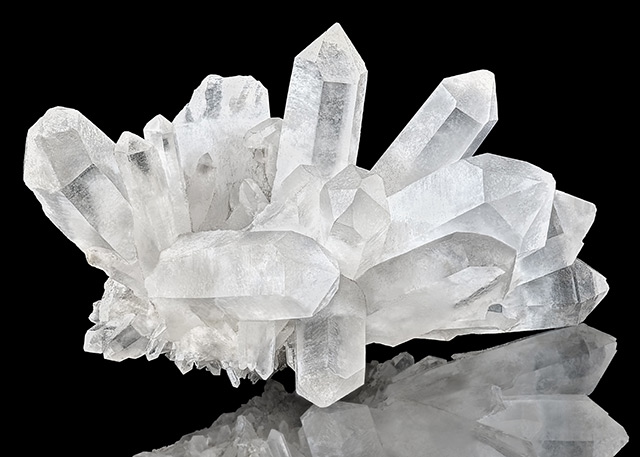
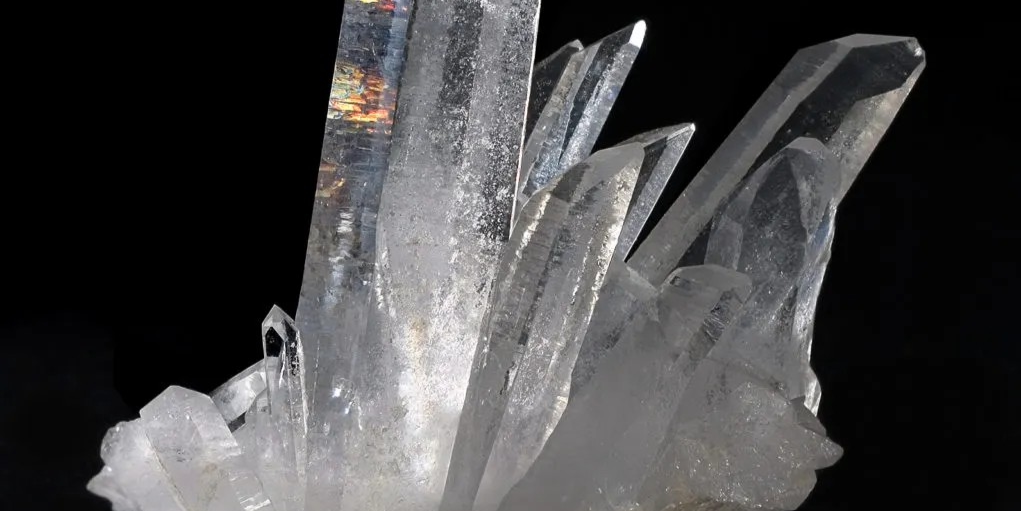 Quartz,, Tibet
Quartz,, Tibet
Quartz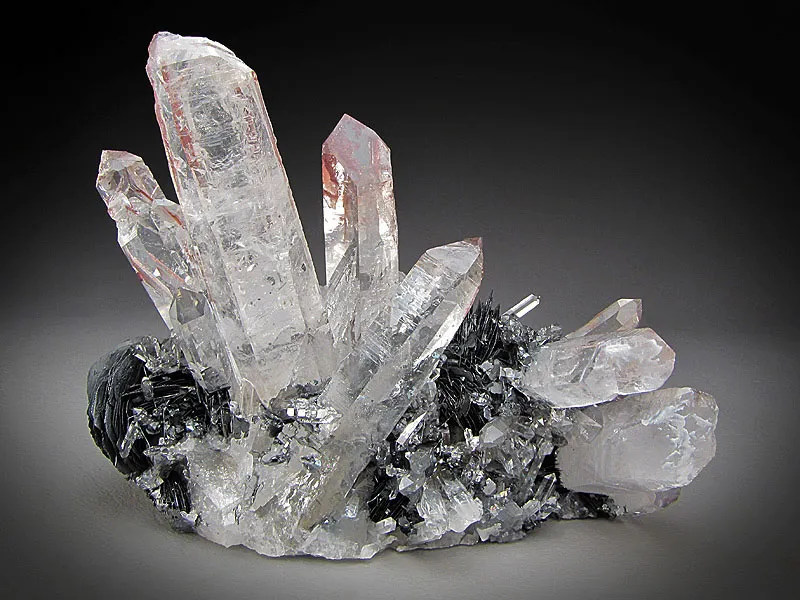 Quartz and Hematite Crystals
Quartz and Hematite Crystals
It is the maximum abundant and widely allotted mineral determined at Earth’s surface. It is abundant all over the arena. In any temperatures. It is abundant in igneous, metamorphic, and sedimentary rocks. It is highly resistant to both mechanical and chemical weathering. This durability makes it the dominant mineral of mountaintops and the primary constituent of seaside, river, and wilderness sand. It is ubiquitous, wide and durable. Mineral deposits are determined at some stage in the world.
Name: The name quartz is a German word of ancient derivation.
Crystallography: Quartz rhombohedral; trigonal-trapezohedral. Quartz hexagonal; trapezohedral. Crystals commonly prismatic, with prism faces horizontally striated. Terminated usually by a combination of positive and negative rhombohedrons, which often are so equally developed as to give the effect of a hexagonal dipyramid. In some crystals one rhombohedron predominates or occurs alone. The prism faces may be wanting, and the combination of the two rhombohedrons gives what appears to be a doubly terminated hexagonal dipyramid (known as a quartzoid). Some crystals much distorted, but the recognition of the prism faces by their horizontal striations will assist in the orientation of the crystal. The trapezohedral faces are to be occasionally observed as small truncations between a prism face and that of an adjoining rhombohedron either to the right or left, forming what are known as right- or left-handed crystals. Crystals are often elongated in tapering and sharply pointed forms, owing to an oscillatory combination between the faces of the different rhombohedrons and those of the prism. Some crystals twisted and bent.
Crystals frequently twinned. The twins are usually so intimately intergrown that they can be determined only by the irregular position of the trapezohedral faces, by etching the crystal, or by the pyroelectric phenomena that they show. The size of crystals varies from individuals weighing a ton to finely crystalline coatings, forming “ drusy ” surfaces. Also common in massive forms of great variety. From coarse- to fine-grained crystalline to flintlike or cryptocrystalline, giving rise to many variety names. May form in concretionary masses.
Composition: Si02. Si = 46.7 percent, 0 = 53.3 percent. Usually nearly pure.
Diagnostic Features: Characterized by its glassy luster, conchoidal fracture, and crystal form. Distinguished from calcite by its high hardness. Maybe confused with some varieties of beryl.
Similar Species: Lechatelierite, Si02, is fused silica or silica glass. Found in fulgurites, tubes of fused sand formed by lightning, and in cavities in some lavas.
Contents
- Quartz Physical Properties
- Quartz Optical Properties
- Quartz Crystal Habit and Structure
- Geological settings and formation processes
- Occurrence of Quartz
- Mineralogical characteristics and diagnostic tests
- Relation to other minerals and mineral groups
- Coarsely Crystalline Varieties (according to color)
- Cryptocrystalline Varieties
- Fibrous Varieties
- Granular Varieties
- Thermal and electrical properties
- Quartz Uses
- Occurrence and distribution
- References
Quartz Physical Properties
| Chemical Classification | Silicate |
| Color | Quartz occurs in virtually every color. Common colors are clear, white, gray, purple, yellow, brown, black, pink, green, red. |
| Streak | Colorless (harder than the streak plate) |
| Luster | Vitreous |
| Diaphaneity | Transparent to translucent |
| Cleavage | None – typically breaks with a conchoidal fracture |
| Mohs Hardness | 7 |
| Specific Gravity | 2.6 to 2.7 |
| Diagnostic Properties | Conchoidal fracture, glassy luster, hardness |
| Chemical Composition | SiO2 |
| Crystal System | Hexagonal |
| Uses | Glass making, abrasive, foundry sand, hydraulic fracturing proppant, gemstones |
Quartz Crystal Habit and Structure
Quartz belongs to the trigonal crystal system. The ideal crystal form is a six-sided prism terminating with six-sided pyramids at every cease. In nature quartz crystals are regularly twinned (with dual proper-surpassed and left-exceeded crystals), distorted, or so intergrown with adjacent crystals of quartz or other minerals as to simplest show part of this shape, or to lack apparent crystal faces altogether and seem huge. Well-shaped crystals commonly form in a ‘bed’ that has unconstrained boom into a void; commonly the crystals are connected at the other stop to a matrix and simplest one termination pyramid is gift. However, doubly terminated crystals do arise in which they develop freely without attachment, as an example inside gypsum. It geode is this kind of state of affairs in which the void is about spherical in form, lined with a mattress of pointing inward.
Geological settings and formation processes
Quartz is one of the most abundant minerals in the Earth’s crust and can be found in many different geological settings.
One of the most common settings for quartz formation is in igneous rocks, such as granite, where it can form as a result of the slow cooling and crystallization of magma. Quartz can also be found in metamorphic rocks, such as marble and schist, which are formed by the recrystallization of pre-existing rocks under high pressure and temperature.
In sedimentary rocks, quartz is often found as a major constituent of sandstones, which are formed from the accumulation and cementation of sand-sized grains. Quartz can also be deposited from hydrothermal solutions, which are hot, mineral-rich fluids that circulate through fractures and pore spaces in rocks.
Additionally, quartz can form as a result of biomineralization, which is the process by which living organisms produce minerals. For example, some types of plankton and diatoms are known to produce their skeletons and cell walls out of silica, which is the main component of quartz.
The specific geological setting and formation process can affect the physical and chemical properties of quartz, including its color, transparency, crystal shape, and impurities.
Occurrence of Quartz
Quartz occurs as an important constituent of those igneous rocks which have an excess of silica, such as granite, rhyolite, pegmatite. It is extremely resistant to both mechanical and chemical attack, and thus the breakdown of igneous rocks containing it yields quartz grains which may accumulate and form the sedimentary rock sandstone. Also occurs in metamorphic rocks, as gneisses and schists, while it forms practically the only mineral of quartzites. Deposited often from solution and is the most common vein and gangue mineral. Forms as flint deposited with chalk on the sea floor in nodular masses. Solutions carrying silica may replace beds of limestone with a granular cryptocrystalline quartz known as chert, or discontinuous beds of chert may form contemporaneously with the limestone. In rocks it is associated chiefly with feldspar and muscovite; in veins with practically the entire range of vein minerals. Often carries gold and becomes an important ore of that metal. Occurs in large amount as sand in stream beds and upon the seashore and as a constituent of soils.
Rock crystal is found widely distributed, some of the more notable localities being: the Alps; Minas Geraes, Brazil; the island of Madagascar; Japan. The best quartz crystals from the United States are found at Hot Springs, Arkansas, and Little Falls and Ellenville, New York. Important occurrences of amethyst are in the Ural Mountains; Czechoslovakia; Tyrol; Brazil. Found at Thunder Bay on the north shore of Lake Superior. In the United States found in Delaware and Chester Counties, Pennsylvania; Black Hills, South Dakota; Wyoming. Smoky quartz is found in large and fine crystals in Switzerland; and in the United States at Pikes Peak, Colorado; Alexander County, North Carolina; Auburn, Maine.
The chief source of agates at present is a district in southern Brazil and northern Uruguay. Most of these agates are cut at Oberstein, Germany, itself a famous agate locality. In the United States agate is found in numerous places, notably in Oregon and Wyoming. The chalk cliffs of Dover, England, are famous for the flint nodules that weather from them. Similar nodules are found on the French coast of the English Channel and on islands off the coast of Denmark. Massive quartz, occurring in veins or with feldspar in pegmatite dikes, is mined in Connecticut, New York, Maryland, and Wisconsin for its various commercial uses.
Mineralogical characteristics and diagnostic tests
Quartz is a mineral that is composed of silicon and oxygen atoms in a continuous framework of SiO4 silicon–oxygen tetrahedra, with each oxygen being shared between two tetrahedra, giving an overall chemical formula of SiO2.
Some of the mineralogical characteristics of quartz include its typical color, which is usually colorless or white, but can also be gray, brown, purple, pink, green, red, and black depending on the impurities present. Its crystal system is trigonal, meaning it has threefold symmetry around an axis perpendicular to its basal plane. Its hardness is 7 on the Mohs scale, making it one of the hardest minerals, and it has a conchoidal fracture.
Some of the diagnostic tests used to identify quartz include observing its characteristic crystal habit and fracture pattern, testing its hardness, and performing a streak test, which involves scratching the mineral on an unglazed porcelain plate to see the color of the powder produced. Another diagnostic test is the acid test, where quartz is placed in hydrochloric acid and if it fizzes, it is not quartz.
Relation to other minerals and mineral groups
Quartz is a mineral that belongs to the group of silicate minerals, which also includes feldspars, micas, and zeolites. It is one of the most common minerals on Earth, and it can be found in various geological environments. Quartz is often associated with other minerals, such as feldspar, mica, and amphiboles, and it can be found in various types of rocks, including granite, gneiss, schist, and sandstone.
In some cases, quartz can be found in association with minerals that are characteristic of specific geological environments. For example, quartz veins are often found in association with gold and sulfide minerals in hydrothermal systems, and quartz can also be found in sedimentary rocks that are formed in arid or semi-arid environments, such as sandstone and chert. In igneous rocks, quartz can be found as phenocrysts in volcanic rocks, or as a major constituent of plutonic rocks such as granite and pegmatite.
Quartz can also be found in association with minerals such as tourmaline, fluorite, calcite, and barite, which are commonly found in hydrothermal deposits. The presence of these minerals can provide important clues about the conditions of formation of the quartz and the deposit as a whole.
Coarsely Crystalline Varieties (according to color)
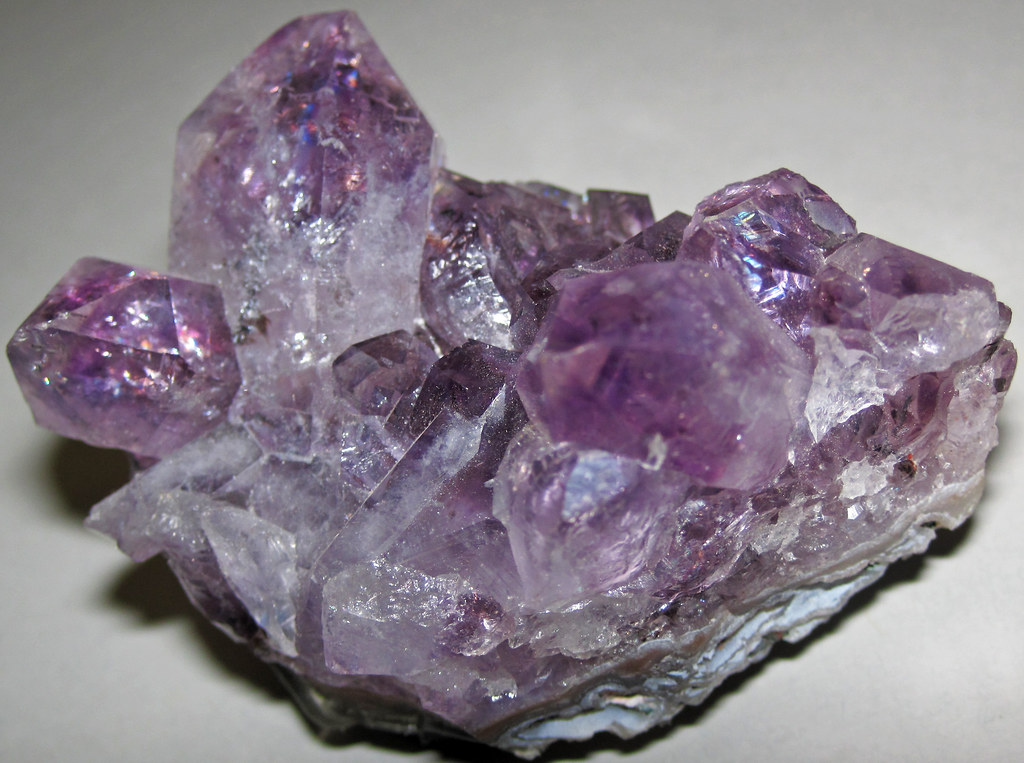
Amethyst (purple quartz) | by James St. John, flickr.com
Amethyst: Amethyst is a shape of quartz that stages from a shiny to dark or stupid crimson shade. The international’s biggest deposits of amethysts may be located in Brazil, Mexico, Uruguay, Russia, France, Namibia and Morocco. Sometimes amethyst and citrine are discovered developing within the identical crystal. It is then called ametrine. An amethyst is fashioned whilst there’s iron within the location in which it became formed.
Blue quartz: Blue quartz contains inclusions of fibrous magnesio-riebeckite or crocidolite.
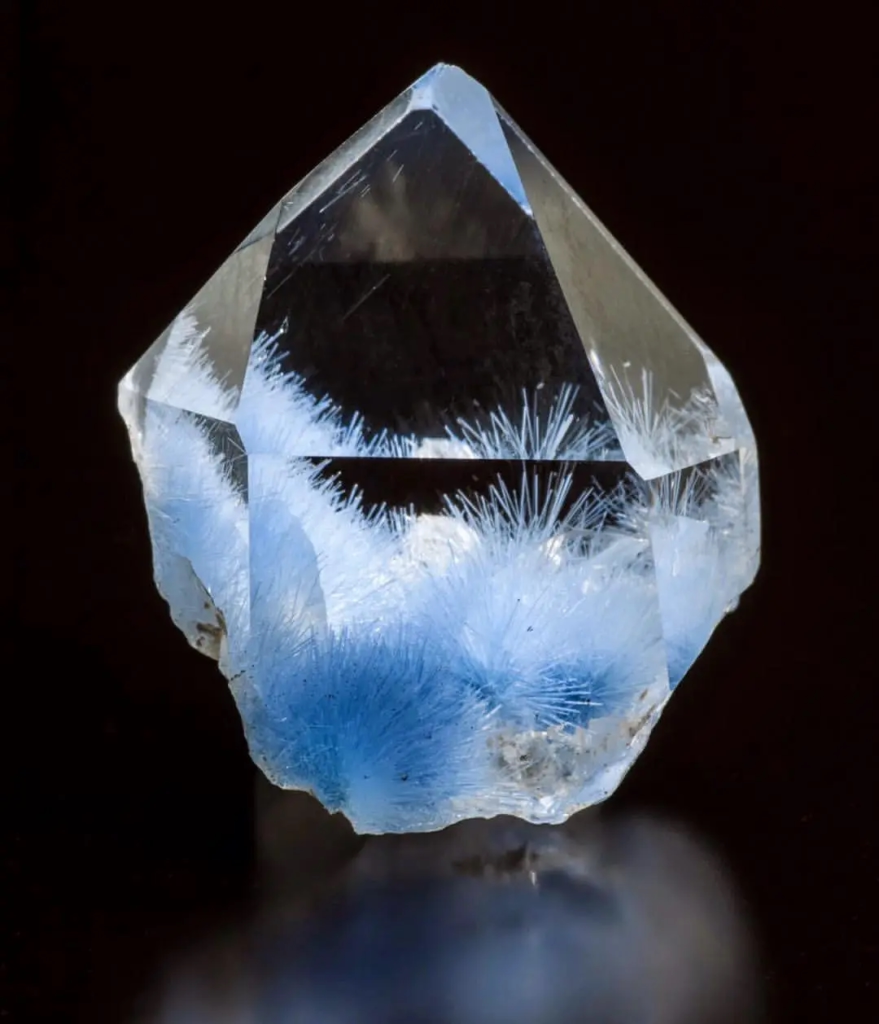
Dumortierite in Quartz
Dumortierite quartz: Inclusions of the mineral dumortierite within quartz pieces regularly bring about silky-appearing splotches with a blue hue, shades giving off pink and/or grey colors moreover being found. “Dumortierite quartz” (every so often called “blue quartz”) will now and again feature contrasting light and dark shade zones across the material.Interest in the positive nice kinds of blue quartz as a collectible gemstone in particular arises in India and inside the United States.
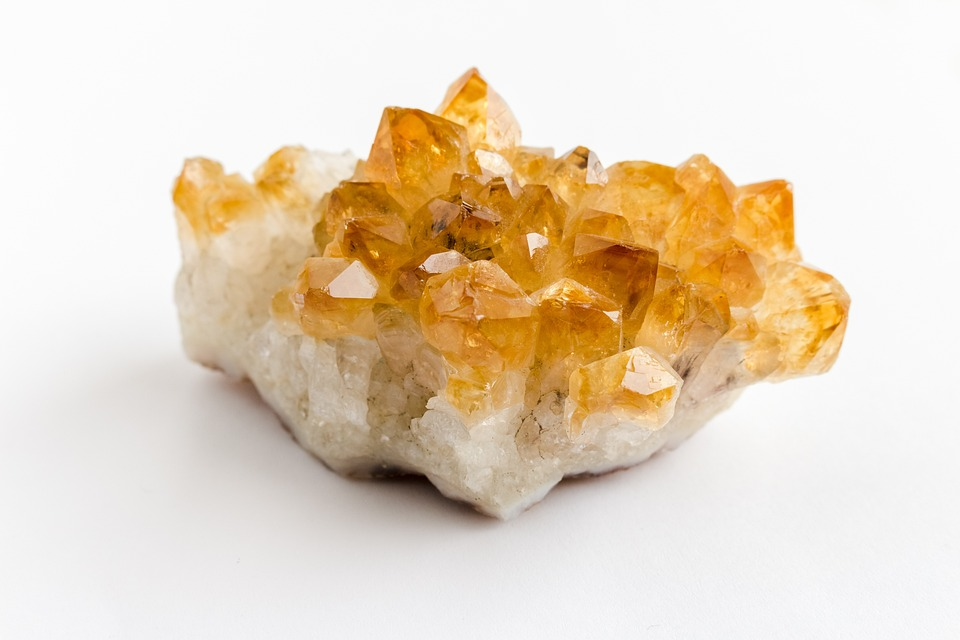
citrine crystal
Citrine: Citrine is a spread of quartz whose colour levels from a faded yellow to brown because of ferric impurities. Natural citrines are uncommon; maximum commercial citrines are heat-treated amethysts or smoky quartzes. However, a warmth-treated amethyst may have small lines inside the crystal, as opposed to a herbal citrine’s cloudy or smokey appearance. It is sort of impossible to distinguish between cut citrine and yellow topaz visually, however they range in hardness.

Amethyst-milky quartz (Diamond Hill, Ashaway Village, Hopkinton, Rhode Island,
Milky quartz: Milk quartz or milky quartz is the most not unusual kind of crystalline quartz. The white colour is due to minute fluid inclusions of gasoline, liquid, or each, trapped at some point of crystal formation, making it of little value for optical and first-rate gemstone packages.
Rose quartz is a type of quartz which exhibits a pale purple to rose red hue. The color is commonly taken into consideration as due to hint quantities of titanium, iron, or manganese, inside the fabric. Some rose quartz includes microscopic rutile needles which produces an asterism in transmitted light. Recent X-ray diffraction research recommend that the shade is because of skinny microscopic fibers of likely dumortierite within the quartz.

Smoky quartz Ural Berezovski (Sverdlovsk Oblast)
Smoky quartz is a grey, translucent model of quartz. It ranges in readability from nearly entire transparency to a brownish-grey crystal that is almost opaque. Some also can be black. The translucency outcomes from herbal irradiation creating free silicon within the crystal.
Prasiolite: Not to be harassed with Praseolite. Prasiolite, also referred to as vermarine, is a ramification of quartz that is inexperienced in coloration. Since 1950, almost all natural prasiolite has come from a small Brazilian mine, however it is also visible in Lower Silesia in Poland. Naturally taking place prasiolite is also observed inside the Thunder Bay location of Canada. It is a unprecedented mineral in nature; maximum inexperienced it is warmth-handled amethyst
Cryptocrystalline Varieties
The cryptocrystalline varieties of quartz may be divided into two general classes; namely, fibrous and granular, which, in most cases, are impossible to tell apart without microscopic aid.
Fibrous Varieties
Chalcedony is the general name applied to fibrous varieties. It is more specifically thought of as a brown, translucent variety, with a waxy luster, often mammillary and in other imitative shapes. Chalcedony has been deposited from aqueous solutions and is frequently found lining or filling cavities in rocks. Color and banding give rise to the following varieties:
- Carnelian. A red chalcedony.
- Chrysoprase. An apple-green chalcedony.
- Heliotrope or bloodstone. A green chalcedony with small red spots in it.
- Agate. A variegated variety with alternating layers of chalcedony and opal, or granular cryptocrystalline quartz. The different colors are usually in delicate, fine parallel bands which are commonly curved, in some specimens concentric (Plate XIV). Most agate used for commercial purposes is colored by artificial means. Some agates have the different colors not arranged in bands but irregularly distributed. Moss agate is a variety in which the variation in color is due to visible impurities, often manganese oxide in moss-like patterns. Wood that has been petrified by replacement by clouded agate is known as silicified or agatized wood.
- Onyx. Like agate, is a layered chalcedony and opal, with layers arranged in parallel planes.

Precious stone agate
Granular Varieties
- Flint. Something like chalcedony in appearance, but dull, often dark, in color. It usually occurs in nodules in chalk and breaks with a prominent conchoidal fracture, giving sharp edges. Used for various implements by early man.
- Chert. A compact massive rock similar in most properties to flint, but usually light in color.
- Jasper. A granular cryptocrystalline quartz, usually colored red from hematite inclusions.
- Prase. Dull green in color; otherwise similar to jasper, and occurs with it.
Replica flint spear
Thermal and electrical properties
Quartz is a mineral with important thermal and electrical properties. Some of these properties include:
- Thermal expansion: Quartz has a low thermal expansion coefficient, which means it does not expand or contract significantly with changes in temperature. This property makes it useful in applications where dimensional stability is important, such as in precision instruments and optical devices.
- Thermal conductivity: Quartz has a high thermal conductivity, which means it can transfer heat quickly and efficiently. This property makes it useful in applications where heat needs to be dissipated, such as in electronic components.
- Electrical conductivity: Quartz is an excellent electrical insulator, which means it does not conduct electricity well. However, when it is exposed to high temperatures, it can become conductive. This property makes it useful in applications where high-temperature insulation is required, such as in electrical wiring and heating elements.
- Piezoelectricity: Quartz exhibits piezoelectricity, which means it can generate an electrical charge when it is subjected to mechanical stress or pressure. This property makes it useful in a wide range of applications, including pressure sensors, accelerometers, and electronic filters.
- Optical properties: Quartz is transparent in the visible and ultraviolet portions of the electromagnetic spectrum. It also exhibits birefringence, which means that it can split a beam of light into two polarized beams that travel at different speeds. This property makes it useful in optical devices such as polarizing filters, waveplates, and prisms.
Quartz Uses
- Geological processes have occasionally deposited sands which are composed of virtually one hundred% quartz grains. These deposits have been identified and produced as sources of excessive purity silica sand. These sands are used within the glassmaking enterprise. Quartz sand is used inside the production of field glass, flat plate glass, uniqueness glass, and fiberglass.
- The high hardness of quartz, seven at the Mohs Scale, makes it more difficult than most different natural materials. As such it’s miles an wonderful abrasive cloth. Quartz sands and finely floor silica sand are used for sand blasting, scouring cleansers, grinding media, and grit for sanding and sawing.
- It may be very proof against both chemical compounds and heat. It is therefore frequently used as a foundry sand. With a melting temperature better than maximum metals, it is able to be used for the molds and cores of commonplace foundry work. Refractory bricks are often made of quartz sand because of its excessive warmth resistance. Quartz sand is likewise used as a flux in the smelting of metals.
- Quartz sand has a excessive resistance to being beaten. In the petroleum industry, sand slurries are compelled down oil and gasoline wells below very excessive pressures in a technique referred to as hydraulic fracturing. This high strain fractures the reservoir rocks, and the sandy slurry injects into the fractures. The long lasting sand grains keep the fractures open after the pressure is launched. These open fractures facilitate the flow of natural gas into the properly bore.
- Quartz sand is used as a filler inside the manufacture of rubber, paint, and putty. Screened and washed, carefully sized grains are used as filter media and roofing granules. Quartz sands are used for traction within the railroad and mining industries. These sands also are used in recreation on golfing publications, volleyball courts, baseball fields, kid’s sand boxes and seashores.
- It makes an terrific gemstone. It is hard, durable, and usually accepts a super polish. Popular sorts of quartz that are widely used as gem stones include: amethyst, citrine, rose quartz, and aventurine. Agate and jasper are also kinds of quartz with a microcrystalline structure.
- “Silica stone” is an industrial term for materials consisting of quartzite, novaculite, and different microcrystalline include rocks. These are used to provide abrasive gear, deburring media, grinding stones, hones, oilstones, stone files, tube-mill liners, and whetstones.
- Tripoli is crystalline silica of an exceedingly high-quality grain length (less than ten micrometers). Commercial tripoli is a almost pure silica cloth this is used for a diffusion of mild abrasive purposes which encompass: soaps, toothpastes, metallic-sprucing compounds, rings-sharpening compounds, and buffing compounds. It can be used as a polish while making tumbled stones in a rock tumbler. Tripoli is likewise used in brake friction merchandise, fillers in teeth, caulking compounds, plastic, paint, rubber, and refractories.
Occurrence and distribution
Quartz is one of the most abundant minerals on earth and is found in many rock types including igneous, metamorphic, and sedimentary rocks. It is particularly common in continental crust rocks such as granites and rhyolites, and in sedimentary rocks such as sandstones and cherts.
Quartz can also be found in hydrothermal veins, where hot fluids pass through fractures in rocks, depositing minerals as they cool. This can result in the formation of large quartz veins that can be mined for their high-purity quartz content.
In addition to its occurrence in rocks, quartz can also be found in soils and sediments as small particles called silt. These particles can be transported by wind or water and can accumulate in large quantities in certain environments, such as sand dunes and riverbeds.
Extraordinarily common.
- Fine specimens from many places in the Alps of Switzerland and Austria.
- At Carrara, Tuscany, Italy.
- From Bourg d’Oisans, Isµere, France. At Mursinka, Ural Mountains, in the Dodo mine, about 100 km west-northwest of Saranpaul, Subpolar Ural Mountains, and elsewhere in Russia.
- From Sakangyi, Katha district, Myanmar (Burma).
- Large twins from Yamanashi Prefecture and many other places in Japan.
- At Tamboholehehibe and elsewhere in Madagascar.
- From Brazil, in large amounts from many localities in Rio Grande do Sul, Minas Gerais, Goilas, and Bahia.
- Around Artigas, Uruguay. At Thunder Bay, Lake Superior, Ontario, Canada.
- In the USA, from Mt. Ida to Hot Springs, Ouachita Mountains, Arkansas; at Middleville, Herkimer Co., New York; in North Carolina, especially in Alexander and Lincoln Cos. From the Pala and Mesa Grande districts, San Diego Co., California; the El Capitan Mountains, Lincoln Co., New Mexico; the Crystal Park area, Beaverhead Co., and Little Pipestone Creek, Je®erson Co., Montana; and in the Pikes Peak area, El Paso Co., Colorado. From Mexico, in Veracruz and Guerrero.
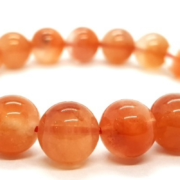
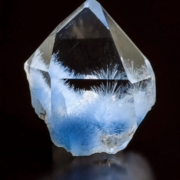
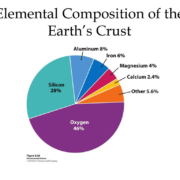
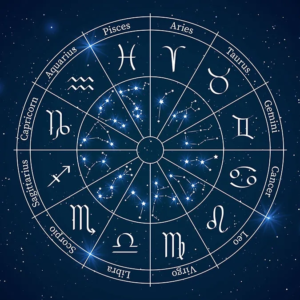
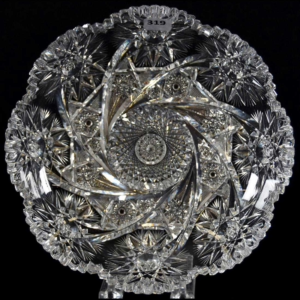
Leave a Reply
Want to join the discussion?Feel free to contribute!